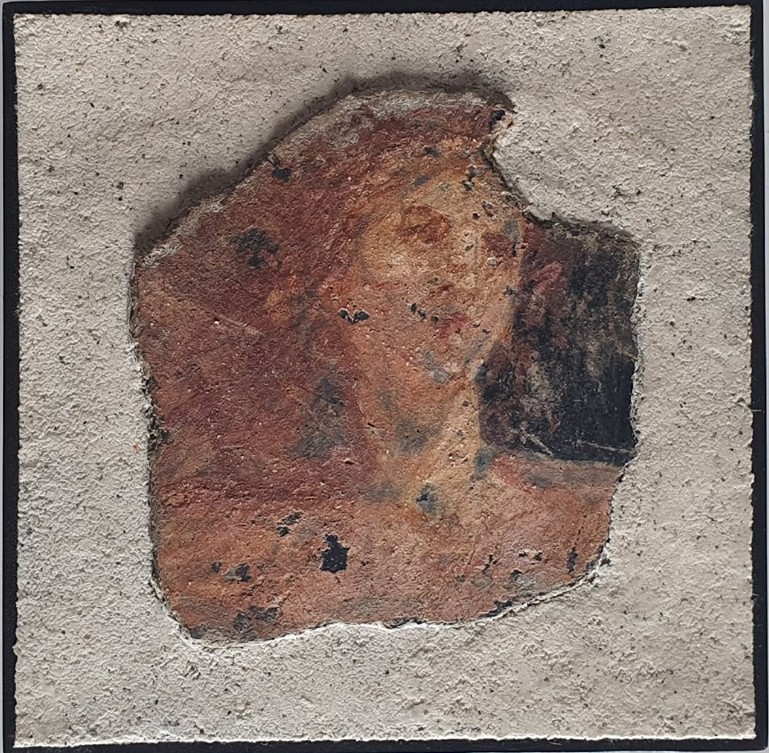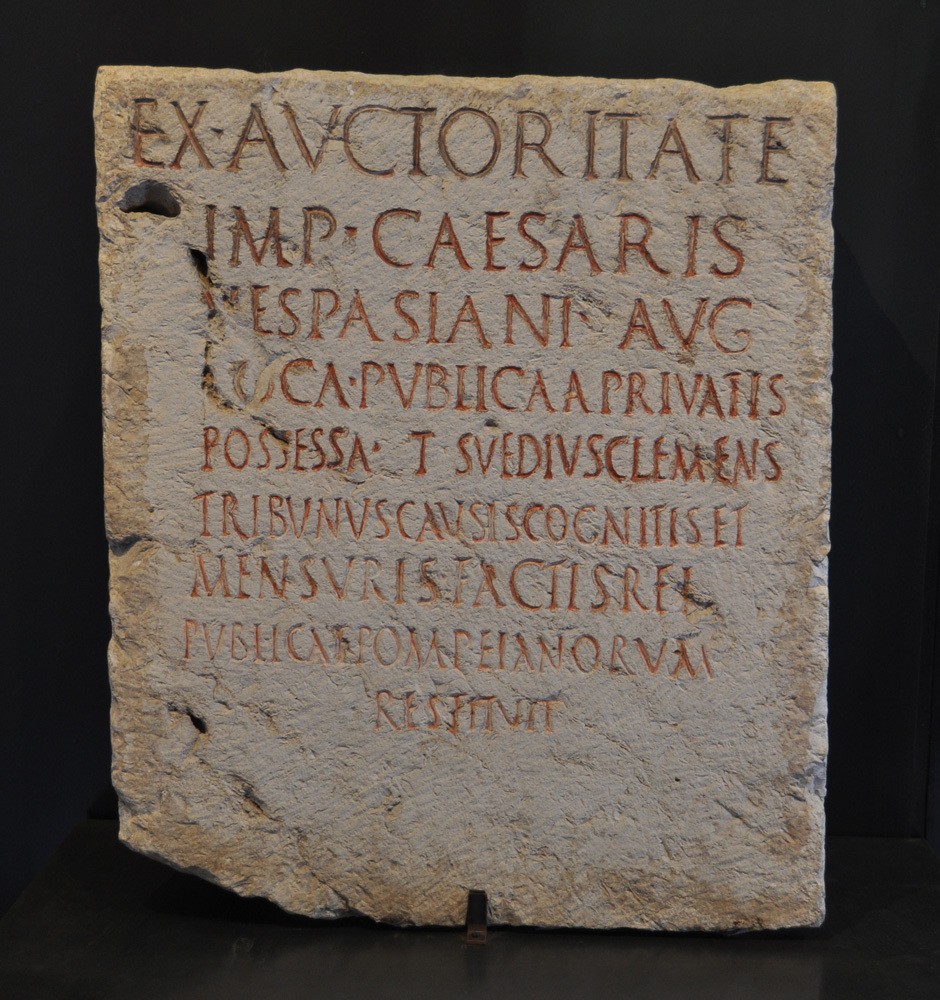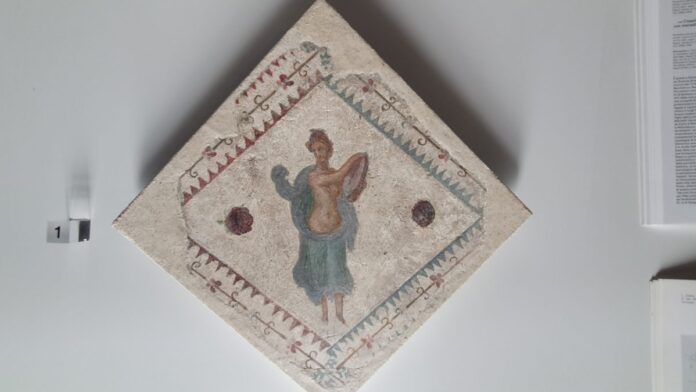According to the Guardian, the archaeological park in Pompeii marks the return of six Roman frescoes that have been restored following an investigation by Italy’s cultural heritage protection department. Three frescoes were removed in the 1970s from the walls of Villa Arianna and Villa San Marco in the ancient city of Stabia.
They were first smuggled out of the country. Then, in the 1990s, the Roman frescoes were bought by antique dealers in the UK, Switzerland, and the United States. The frescoes date back to the 1st century AD. E. And decorated with a variety of motives. One of the panels at Villa Arianna shows a dancing woman holding a tray.

The second photo from the same location shows a cherub playing the flute under a pavilion decorated with plants and two griffin statues. The work of Villa San Marco depicts a woman’s face against a dark background with a wreath of laurel leaves.
Three other fragments of the Roman frescoes come from Civita Juliana, a rural villa north of Pompeii. Before the start of archaeological work in 2017, secret excavations were carried out at the site. An investigation by Italian police revealed that thieves entered the Roman villa through a covered hole in the ground.

In 2020, archaeologists at Civita Giuliana discovered a stable with the remains of three horses and a four-wheeled ceremonial chariot, and two surviving victims of the volcanic eruption of Mt. Vesuvius.
In 79 A.D. the volcano erupted and the ancient Roman city of Pompeii is almost completely preserved. Twenty feet of ash and volcanic debris descended quickly, leaving the ruins untouched for nearly 2,000 years, providing invaluable information about the life and times of its inhabitants.
Gabriel Zuchtrigel, director of the Archaeological Park of Pompeii, said that the city of Pompeii was part of an ancient landscape of transport routes, villas, farms, necropolises, and rural settlements, noting its tremendous archaeological heritage value in the region.
An ancient ceremonial chariot found in Pompeii

According to archaeologists, the find is a ceremonial pilentum chariot that was used exclusively by the elite. It is in very good condition.
The four-wheeled chariot is decorated with tin and bronze and contains traces of pillows and ropes for garlands of flowers.
The chariot was found on the territory of a villa in ancient Pompeii, excavations of which have been going on since 2017. Archaeologists expect to find many more valuable things there. Its owners lived in the building at the time of the eruption of Vesuvius in 79 AD.
In addition to purely scientific purposes, these works seek to put an end to the theft of monuments by black archaeologists, who have already dug several tunnels in the area, hunting for ancient treasures.
After archaeological excavations during the 18th-20th centuries and the arrangement of an open-air museum, Pompeii became the second most visited historical monument in Italy – after the Colosseum.
In 2019, before the coronavirus pandemic, the museum was visited by about a million tourists.
Well-preserved frescoed bar counter found in ancient Pompeii

We are talking about the so-called Thermopolius – an ancient Roman snack bar serving hot food and wine with spices. Archaeologists say the find is exceptionally well preserved.
First, they found a fresco depicting a nymph riding a sea horse and a battle of gladiators. After that, it turned out to clear the rest of the fragments depicting scenes from everyday life and animals, which were a traditional part of the menu.

Bones of ducks, pigs, goats, fish, and snails were also found nearby, which were kept in an earthen jug. In one of the jugs, they also found horse beans, which were used as a spice for wine. The remains of two people were also found nearby.
Experts say that the find will help to obtain new and more accurate information about the gastronomic traditions in Pompeii. The general director of the archaeological museum in Pompeii, Massimo Osanna, notes that this is the first fully excavated thermopile. It is believed that there were about 80 Thermopolis in ancient Pompeii.
Pompeii: 3 More Things We Learned From Excavations

Presumably, the founders of Pompeii were the Oscans, one of the peoples of ancient Italy.
Excavations of Pompeii, which died in the catastrophic eruption of Vesuvius in 79 AD, began as early as 1748.
The excavations were carried out with varying intensity, were briefly interrupted during a series of wars and political upheavals, but continued to bring new and discoveries that had a serious impact not only on the study of ancient antiquities but also on the entire European culture.
During this time, hundreds of buildings, thousands of square meters of paintings, and inscriptions on the walls of houses were discovered, and hundreds of thousands of finds were made. We have selected a few finds for you that will help to highlight some of the details of this fascinating story.
Inscription of Titus Svedius Clement. Pompeii,
AD 69-79

Clement was a famous politician of the imperial era: his name is mentioned by the historian Tacitus, and it is also found in other inscriptions. The mention of the inhabitants of Pompeii unambiguously allowed the open ruins to be identified as belonging to this particular city.
Stone hand mills. Pompeii,
1st century AD

The premises of bakeries with ovens were found, in one of which even burnt loaves were preserved. Inside the bakeries, there were unusual devices of gray sturdy stone.
In the XX century, one of the hand mills was restored, adding the necessary parts, after which it began to regularly grind grain as if 2000 years had not passed. This is how scientists learned the exact performance of ancient mills and how much flour the Pompeian bakers used to make bread.
Fresco with the dance of the fullons. Fulonica Lucius Verania Gipsea. Pompeii, 1st century AD

Vivid Roman frescoes, preserved in abundance on the walls of the houses of Pompeii, also revealed many secrets of an ancient civilization.
A fountain was found in the peristyle courtyard of the laundry, located between two pillars – pylons. On one of them, the image of the various stages of Fulonica’s work has been preserved: wringing out the linen using a press, cleaning, and drying. Particularly interesting is the scene of the washing process, the so-called “dance of full-on”: in Roman times, only men were involved in washing, as it required serious physical strength.

























